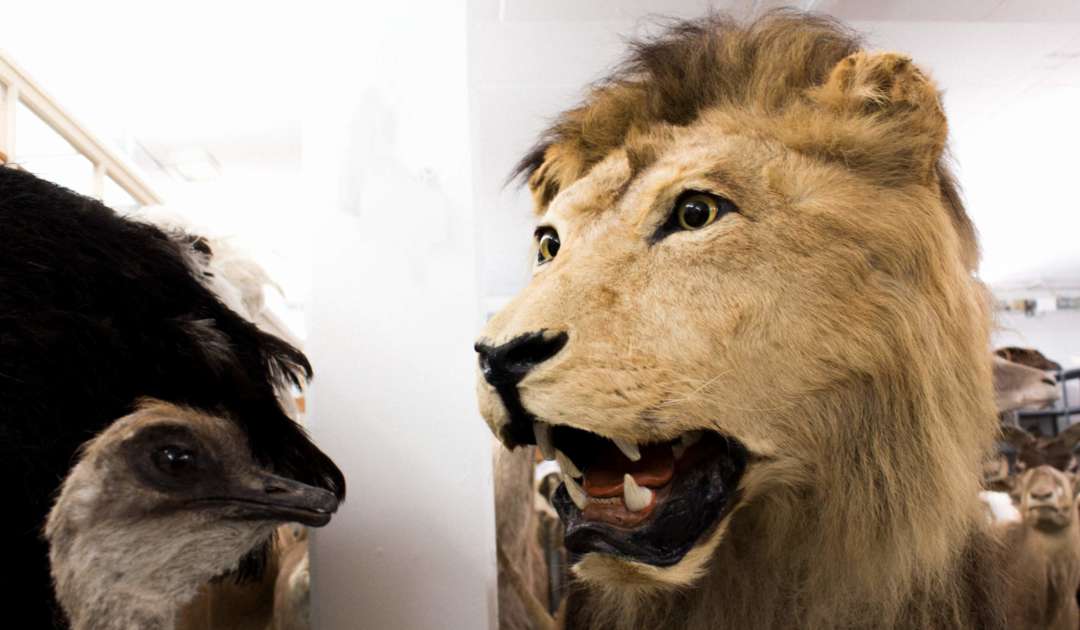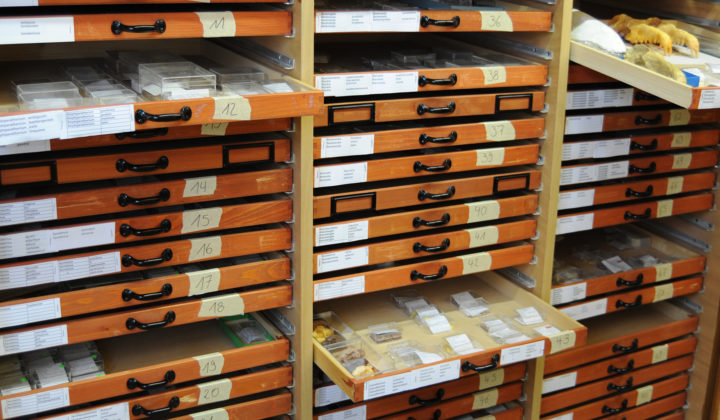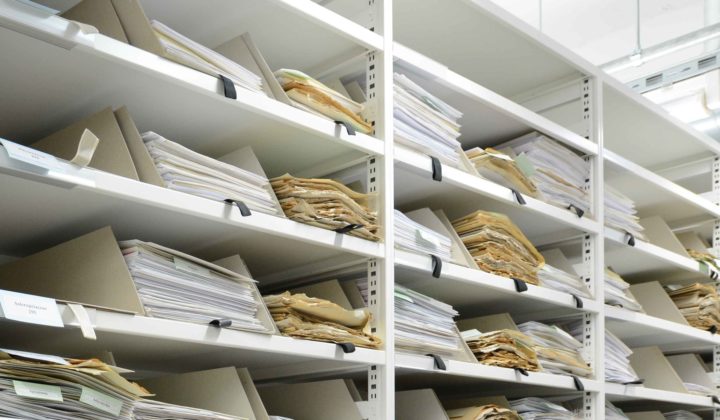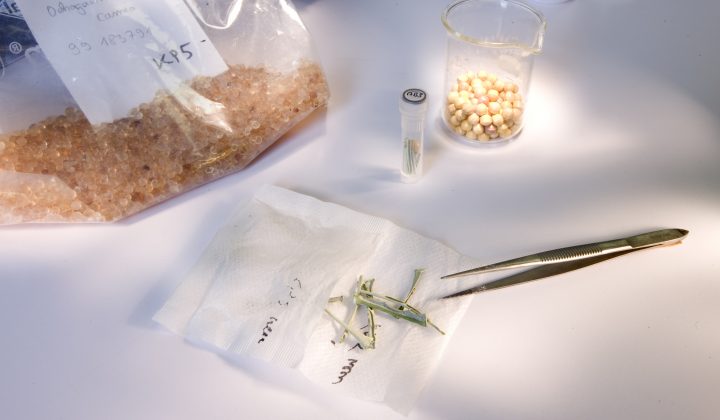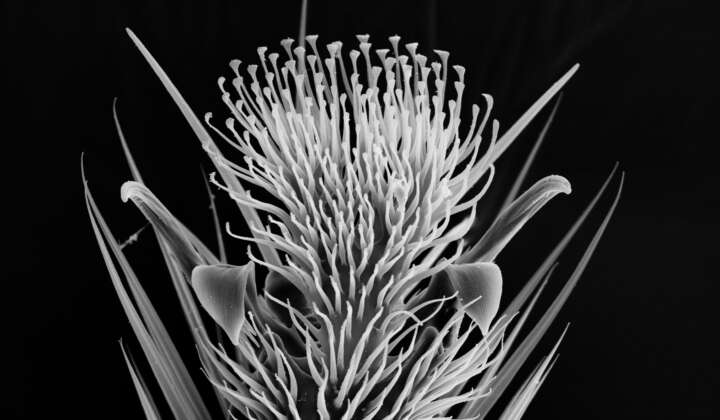Senckenberg Collection Rules
Principles for dealing with the research collections and exhibition objects at the institutes of the Senckenberg – Leibniz Institution for Biodiversity and Earth System Research (SGN)
1. Preamble
According to its constitution, Senckenberg is tasked with conducting natural history research and making the results available to the public through publications, outreach events, presentations, teaching, and its natural history museums. Founded in 1817 at the suggestion of Johann Wolfgang von Goethe, Senckenberg, with its over 40 million collection items (specimens or series) and around 7,000 m² of exhibition space in three public museums located at Frankfurt, Dresden and Görlitz, respectively, is not only one of the largest, but also one of the most traditional institutions of its kind. This tradition calls for a careful and ethically responsible management with the precious, often unique scientific collections and publicly exhibited collection items entrusted to Senckenberg.
The collection rules presented here represent a commitment by the Senckenberg – Leibniz Institution for Biodiversity and Earth System Research (SGN). Besides following the principles of the “ICOM Code of Ethics for Museums”, they also take into account national and international law and the specific local traditions of the historical collections in Frankfurt, Dresden, Görlitz, Weimar, Tübingen and Müncheberg as well as the specific rules for research and display collections of natural history.
1.1. Natural History research collections are archives of nature. They document organisms, remains of organisms and abiotic objects of nature (e.g. minerals, rocks, meteorites) and are part of the research infrastructure to be used by the entire “scientific community”. The Senckenberg collection rules describe the principles of acquiring new material, as well as the care towards the objects, loan, public access and removal of collection objects. Depending on financial possibilities, as well as on the legal, ethical and scientific restrictions Senckenberg pursues an “open access” philosophy. The research collections are by no means used for economic profit.
1.2. The display collections serve to communicate scientific content to the general public; they are open to the public and can therefore also be at risk.
1.3. For the exhibit collections, the Senckenberg collection rules set standards for obtaining and disposing of collection specimens, including these exhibit specimens. The rules also set standards for issues concerning the display and security of collection material. Careful consideration of and compliance with ethical standards is required when displaying human remains.
1.4. The Senckenberg collection rules are not to be seen as legal regulations. Rather, they describe the scientific and ethical principles of dealing with the Senckenberg research and display collections. They were developed under broad participation of employees at all locations. Their structure and principles were reviewed by the Scientific Advisory Board and subsequently adopted by the boards and committees of the society. These rules will continuously be adapted to new developments in science and collection techniques.
2. Acquisition of objects and collections
The scientific collections of Senckenberg encompass recent and fossil flora and fauna (including human remains) and abiotic geological specimens (including meteorites). The collection is expanded through targeted research projects. Individual specimens and entire collections are obtained through purchases, exchanges, donations, legacies, or field work.
2.1. Conditions and restrictions concerning acquisition
Prior to including an object or a collection of such, the authenticity, value, origin and ownership are verified by Senckenberg scientists or external experts, and, the monetary value is estimated. For all acquisitions of collections, the collection transfer has to be completed and signed. This document secures the legal transfer of rights relating to the collection from the donor to the recipient (SGN). Conditional donations of collection material are only accepted if the terms comply with the terms of reference generally accepted for Senckenberg collections and exhibitions. If they are contrary to the interests of Senckenberg, such donations are rejected.
Objects and collections without clear ownership may not be acquired. However, objects of outstanding scientific importance, whose preservation is of public interest may be temporarily deposited in the Senckenberg collections, until origin and ownership are determined. When acquiring specimens and/or collections, national and international regulations must be observed. The acquisition of objects by exchange is only made with material that is scientifically dispensable for Senckenberg. Holo-, neo- and lectotypes as well as original material upon which scientific illustrations are based may not to be exchanged. If it makes sense in a particular case, a purchase of collection objects should be discussed with other institutions of similar orientation to avoid possible conflicts of interest. A written record on the acquisition has to be produced in cases of scientifically important and valuable objects.
2.2. Loans
The provisions of 2.1. shall apply mutatis mutandis also for loans. Curators and museum staff who take loans into their care, ensure their protection and return them as soon as they are no longer needed from the loaning scientist.
2.3. Collections made during field research
The Senckenberg collection activities of scientists and associated staff in Germany and abroad have to be undertaken in accordance with national and international rules, as well as intergovernmental agreements. Acquisitions of scientifically and culturally valuable objects have to be made in agreement with academic institutions in the respective country.
3. Conservation and care of collections
The Senckenberg collections are particularly worthy of protection and conservation due to their high value and irrevocability.
The curators are responsible for the proper preservation and storage of the material under their care.
It is necessary to ensure that the information associated with the objects is not lost, as this could result in a scientific devaluation of the material. Therefore, among other precautions, it is vital that once a catalogue number is given to a collection item and all its associated information this number is permanently maintained.
Concerning various collections under the care of a responsible curator, he creates special additional rules, develops them further and ensures that they are respected.
4. Access to and the development of collections
Natural history collections are research infrastructures. Type material is common property of science, which is kept and administered fiduciarily by the responsible persons and institutions. The Senckenberg staff curating the collections accepts this responsibility and extends it to all the published collection items, since they are to be seen as archives for internationally significant scientific conclusions and theories.
In consequence the following tasks emerge:
4.1. Tasks of curatorial staff
The tasks of the scientists working in collections include the scientific and curatorial development of the collections which are under their care and, as far as possible, the capture of the collection and all its object-related information in the Senckenberg collection database, with the help of which the information is made publicly available on the Internet. The persons responsible for the individual collections are also held responsible for keeping the collection in a technically appropriate state.
4.2. Accessibility of information
The responsible curators can decide on their own responsibility, whether parts of the information associated with specific collection objects have to be blocked from public access. This can for example be the case if
- it is not advisable for reasons of species-, habitat- or site-protection to publish exact locality data,
- it is indispensable because of data- and person-protection,
- it is necessary to protect the intellectual property of a scientist during an ongoing scientific investigation.
Other reasons at the reasonable discretion of the curator are to be recorded in a verifiable form and upon request be presented and explained to the superior or the ombudsman for questions of good scientific practice.
4.3. Requests for information
Inquiries of third parties about information on collection material are to be answered as detailed as possible by the curation team. If there are any reasons for not disclosing part of the information, the reasons for that are to be explained.
4.4. Loans
Decisions on loans of collection material are taken by the responsible curator. In order to safeguard the scientific material due consideration is given to the physical condition of the specimen(s), possible hazards due to shipping and the reliability of the receiver. If in doubt loans are only made to well-known public institutions under the condition that an official person of that institute takes responsibility for the loan. If a loan is not possible, the material can still be examined locally. In principle, access to all objects and information is guaranteed unless one of the reasons for data protection listed under 4.2. applies.
4.5. Visits of the collection
Guest researchers have access to the scientific collection under the supervision of the respective curation staff. Other people without strict research interests may only exceptionally visit the scientific collections during guided tours.
4.6. DNA extraction and study
The extraction and study of DNA has now become one of the standard methods of taxonomy and systematics. It must be remembered that the Convention of Biological Diversity (CBD) allows the commercial exploitation of such resources within very narrow limits. Analogous to the basic understanding that collection materials are held by an individual institution in trust for the entire scientific community, the curators of SGN respect the property of each nation of their genetic resources and make sure concerning their approval of DNA extraction that the purpose of such an action is exactly defined and also that a permission hast to be sought before any further use. Commercial purposes are explicitly excluded. In principle DNA extraction should be handled through the Senckenberg DNA archive using the information and forms available on the Senckenberg website. While dealing with DNA-samples the special “Non Commercial Material Supply Agreement” of the laboratory of Senckenberg applies. Concerning the extraction of DNA, the expected gain of knowledge is to be carefully weighed against the occasionally inevitable damage to the collection object.
4.7. Duplicates and casts
The production of duplicates, casts and 3D models of collection objects is conducted under the terms of a special contract. The terms of use must be clearly defined in such a contract. Digital images of collection material may be published via the collection data base or by other means. The use of these data is free if Senckenberg is cited as the source and further use is allowed under the same conditions. Commercial use requires a special permit and a clear contractual agreement. A set fee schedule is in place for casts, duplicates, and 3D models.
5. Removal of objects
The organisation, maintenance and extension of the research and display collections is a central effort of the SGN. Therefore any kind of removal, whether through donation, exchange, sale or disposition, has to be done with utmost care. It has also to be considered how such a removal could be perceived by the public.
5.1. Reason for removal of objects from the collection Removal of objects can be done for various reasons, especially if
- they were so badly damaged by natural decay or unintentional mishandling that they have no scientific significance any more,
- they undoubtedly do not fit into the concept of the collection policy of the SGN,
- a re-examination and revision of the collection leads to the result that they are not scientifically relevant,
- they were not acquired under lawful conditions or according to ethical principles should not remain in the collections of the SGN,
- an application for restitution has been decided positively after a full discussion on the basis of scientific and professional principles taking into account the arguments of both sides.
5.2. Principles concerning removal
Name-bearing type material, such as holotypes and neotypes, historically important material and material upon which publications are based, may not be removed and must remain permanently secured for science.
Scientific material forming the basis of publications may only be removed if it is transferred to another museum or non-commercial institution.
In the exceptional case, an exchange can also take place with people who cooperate with Senckenberg on a non-commercial basis.
Material without scientific relevance for Senckenberg, which is subject to removal, should first be offered in exchange or for purchase to other research museums or institutes before it is sold on a commercial basis.
Historically important objects or person-related materials, i.e. those with relevance to the history of the section or collection, must be marked accordingly and stored safely. When such documents and records pertain to the history of SGN, their storage must be coordinated with the Senckenberg archive. For the collections in Weimar, SDEI, SNSD, SMNG and SHEP there are also additional, special rules to be followed that were outlined in the contractual agreements made during each museum’s integration into Senckenberg.
Mandatory restrictions linked to the acquisition and conditions for the donation have to be respected, unless it can be clearly demonstrated that adherence to these guidelines is inadequate from a technical and curatorial point of view or is opposed to the interests of Senckenberg.
5.3. Responsibilities and procedures during removal
The decision to remove specimens from the collection is in the responsibility of the appropriate curator.
Before removal of entire collection parts as well as of scientifically and historically significant objects or in the presence of the legates, the responsible curator seeks approval of the head of department. The removal of objects with considerable financial value or collections of larger scientific units can only be done in consultation and after approval of the board of directors of the SGN. Their decisions on removals and the respective items are to be adequately documented so that at any time the evidence for proper conduct can be proven.
5.4. Use of funds generated by the removal
Funds or replacements that were obtained by sale of objects from the collections have to be used in accordance with the scientific and didactic dedication of Senckenberg exclusively for increase, maintenance and presentation of the collection.
6. Public presentation of collection objects
The rules established for the scientific collection in order to ensure the responsible use of natural and cultural heritage and its preservation, apply equally to the objects of the display collection. For the public presentation of collection objects and their placement the following additional rules apply:
6.1. Objectives and educational mission
Permanent and special exhibitions are consistent with the mission and objectives of Senckenberg. According to the statutes of SGN, the natural history museums in Frankfurt, Dresden and Görlitz see themselves as places for communicating scientific contents to the general public. Main objective is the presentation of collection objects and their interpretation in the light of the current state of research. In addition to the presentation and communication of scientific content, in future, increasingly the process of research is to be documented and thus made accessible and understandable to a broad public.
6.2. Scientific reliability and quality assurance
The SGN is eager to keep the information presented in the exhibitions scientifically correct and according to the actual state of research. The views expressed by the research are presented in an appropriate and genuine way. As an institution that is committed to science the SGN aims at presenting the content in an objective way and as much as possible free from world-views and philosophies of life. Nevertheless, it cannot be excluded that religious and philosophical sentiments can unintentionally be injured.
6.3. Exhibition rooms
In the exhibition, great emphasis is placed on an appropriate presentation, management, conservation and protection of the exhibits. Adequate precautions to protect against threats such as theft, fire, water, vandalism and natural decay are present and are constantly adjusted. The museum exhibition spaces and other facilities are accessible to the public at reasonable, regular times.
6.4. Accessibility
Senckenberg strives to make the public exhibits as much as possible physically accessible for disabled people and continuously improves the respective facilities. Likewise, the presentation of the content is as far as possible organised in a way that allows access for disabled people.
6.5. Presentation of culturally sensitive objects
The exhibitions of the Senckenberg Museums are mainly related to natural history topics. Exhibitions covering other, culturally sensitive issues will therefore always be exceptions. For example, in a special exhibition on human made products or materials that may have a religious significance for certain population groups, this will only be done according to professional standards which respect the interests and dignity of the affected culture or religious groups, and with the greatest possible respect for the culture and the beliefs of the group. Human objects or body part preparations that could have come from victims of the Third Reich, are generally not used for exhibitions.
6.6. Exhibition of objects whose ownership is unclear
Senckenberg avoids exhibiting objects whose ownership is unclear. As a museum of international reputation, it is aware of its role as a positive model for society in general and for other museums in particular.
